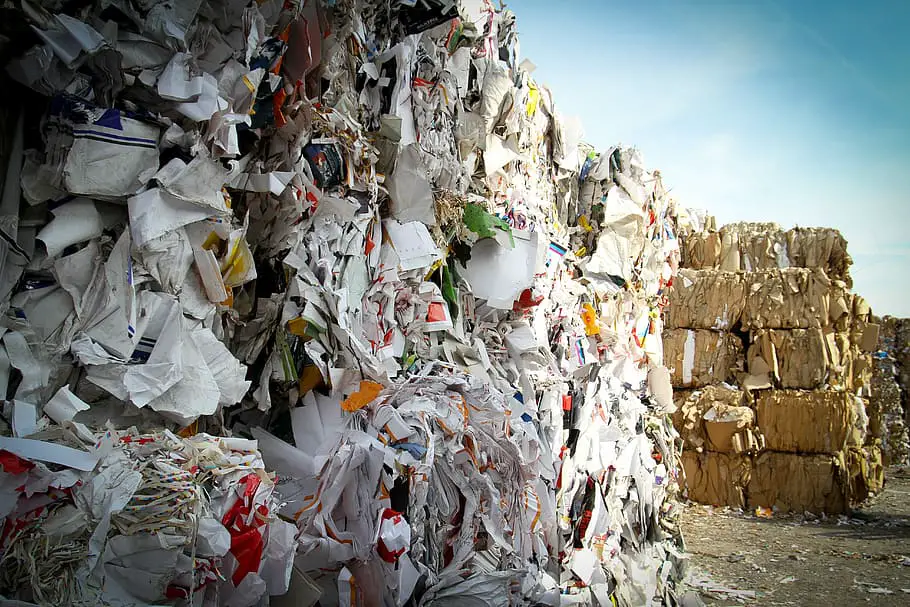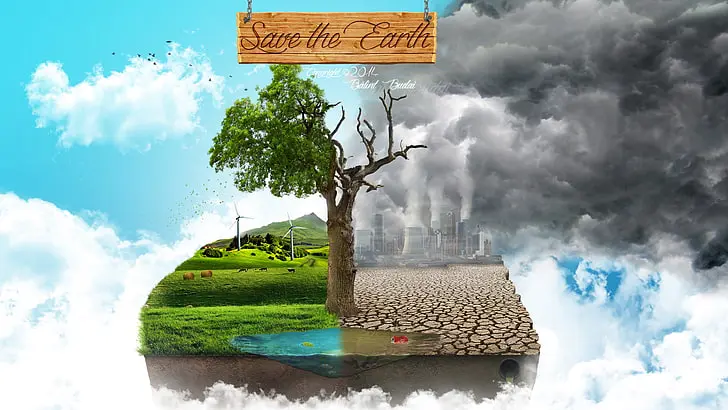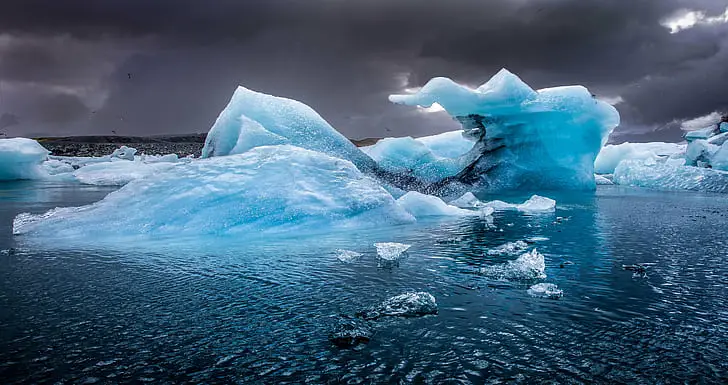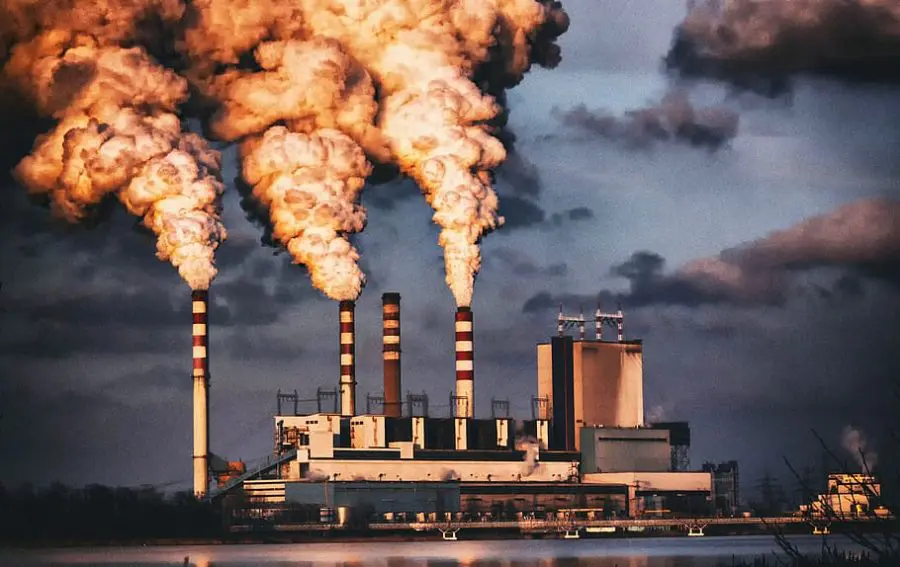
How does recycling help reduce pollution in our everyday lives? Join us as we explore the science, benefits, and impact of recycling on our environment.
Ever wondered, how does recycling help reduce pollution? Well, you’re not alone.
It’s a question that’s on the minds of many as we navigate our way through the challenges of climate change.
The good news is, recycling is one of the simplest and most effective ways we can make a difference.
It’s more than just sorting plastics and papers, it’s about transforming our waste into valuable resources, reducing the strain on our planet, and paving the way for a cleaner, healthier future.
So, let’s dive in and explore the world of recycling together!
How Does Recycling Help Reduce Pollution?
Are you curious about how recycling helps reduce pollution? If so, you’re in the right place!
In this blog post, we’re going to unravel the mystery behind the recycling process, its impact on air and water pollution, and its role in conserving our precious natural resources.
We’ll also share some inspiring case studies of successful recycling programs and provide a handy guide on recycling common items correctly.
Plus, we’ll answer some frequently asked questions about recycling and pollution reduction.
So, buckle up and get ready for an enlightening journey into the world of recycling and its crucial role in making our planet a cleaner, healthier place to live.
Brief Overview of Recycling and Its Importance
Let’s start at the beginning, shall we? Recycling, at its core, is the process of converting waste materials into new, usable products.
It’s like giving your trash a second chance at life! But it’s not just about reducing waste.
Recycling plays a pivotal role in our global effort to conserve natural resources.
Think about it. Every time we recycle a piece of paper, we’re saving a tree. Every time we recycle plastic bottles, we’re reducing the need for new plastic, which is made from non-renewable resources like oil.
So, in essence, recycling is a small act with a big impact. It’s a simple step that each of us can take toward preserving our planet for future generations.
The Connection Between Recycling and Pollution Reduction
Now, you might be wondering, how does recycling help reduce pollution?
Well, it’s all about the lifecycle of products. When we make new products from raw materials, we have to extract those materials from the earth, transport them, and process them.
Each of these steps requires energy and results in emissions that contribute to air and water pollution.
On the other hand, when we recycle, we’re using materials that have already been processed.
This means we can skip a lot of those energy-intensive, polluting steps.
Plus, recycling keeps waste out of our landfills, reducing the harmful greenhouse gases that are produced when organic waste breaks down.
So, by recycling, we’re not just reducing waste – we’re also helping to keep our air and water clean.
The Science Behind Recycling
Ready to dive a little deeper? Let’s explore the science behind recycling.
It’s not just about separating your glass bottles from your paper products.
There’s a fascinating process that takes place behind the scenes, turning your everyday waste into something new and useful.
From the energy-saving aspects to the intricate processes involved, understanding the science of recycling can give us a greater appreciation for its impact on our world.
So, let’s roll up our sleeves and delve into the nitty-gritty of how recycling works, and why it’s such a crucial part of our fight against pollution.
Explanation of the Recycling Process
Let’s start with the basics. The recycling process begins with you and me.
It starts when we decide to toss our waste into the recycling bin instead of the trash can.
From there, the recyclable materials are collected and taken to recycling centers. Here’s where the magic happens.
At the recycling center, the materials are sorted by type, paper, plastic, glass, and metal.
This is often done with a combination of manual and automated sorting.
Once sorted, each type of material goes through its own specific recycling process.
Take paper, for example. It’s mixed with water to create a pulp, which is then cleaned and screened to remove any non-paper materials.
The cleaned pulp is then de-inked, bleached, and drained to form a mat of fibers. This mat is then pressed and dried to form new paper.
Plastics, on the other hand, are shredded into small flakes, washed to remove any impurities, and then melted down and reshaped into new plastic products.
The Energy-Saving Aspect of Recycling
Now, let’s talk about the energy-saving aspect of recycling.
When we make new products from raw materials, it requires a lot of energy to extract, transport, and process those materials.
But when we recycle, we’re using materials that have already been through that process once.
This means we can skip a lot of those energy-intensive steps.
For instance, did you know that recycling aluminum cans saves 95% of the energy needed to produce new ones from raw materials?
Or that recycling paper uses 60% less energy than making paper from fresh timber?
These savings add up quickly, reducing our overall energy consumption and helping to decrease our carbon footprint.
So, the next time you toss a can or a newspaper into the recycling bin, remember you’re not just reducing waste, you’re also conserving energy and helping to protect our planet.
How Recycling Reduces Air and Water Pollution
Now that we’ve got a handle on the science behind recycling, let’s delve into one of its most significant benefits: reducing air and water pollution.
It’s a topic that’s more important than ever as we grapple with the effects of climate change and seek ways to lessen our impact on the planet.
In this section, we’ll explore how the simple act of recycling can play a major role in keeping our air and water clean.
So, let’s take a closer look at how recycling helps us breathe a little easier and protect our precious water resources.
The Role of Recycling in Reducing Greenhouse Gas Emissions
Let’s talk about greenhouse gases. These are gases like carbon dioxide and methane that trap heat in our atmosphere, leading to global warming and climate change.
Now, you might be wondering, What does recycling have to do with all this? Well, quite a lot, actually!
When we extract raw materials and manufacture new products, we burn fossil fuels, which release greenhouse gases into the atmosphere.
But when we recycle, we’re using materials that have already been processed, so we can skip many of these energy-intensive, greenhouse gas-emitting steps.
Plus, recycling helps keep waste out of landfills. Why is this important?
Well, when organic waste breaks down in a landfill, it produces methane a greenhouse gas that’s over 20 times more potent than carbon dioxide.
By recycling things like paper and food waste, we can reduce the amount of methane being released into our atmosphere.
How Recycling Conserves Water Resources
Now, let’s turn our attention to water. Water is a precious resource, and yet, the manufacturing processes for many of our everyday products use a surprising amount of it.
For instance, did you know it takes about 24 gallons of water to make one pound of plastic? That’s a lot of water!
But here’s where recycling comes in. When we recycle, we’re using materials that have already been processed, so we don’t need as much water to make new products.
For example, recycling paper uses 60% less water than making paper from fresh timber.
So, every time you recycle, you’re not just saving energy and reducing greenhouse gas emissions you’re also helping to conserve our planet’s precious water resources.
Now that’s something to feel good about!
The Impact of Recycling on Landfills and Natural Resources
Let’s shift gears and discuss another crucial aspect of recycling: its impact on landfills and natural resources.
We all know that landfills are not the most pleasant of places, but did you know that recycling can significantly reduce the amount of waste that ends up there?
And that’s not all. Recycling also plays a vital role in conserving our natural resources.
In this section, we’ll delve into how recycling helps us make the most of what we have and minimize our impact on the planet.
So, let’s get started and uncover the ways recycling is making a difference in our world.
How Recycling Reduces the Amount of Waste Going to Landfills
Let’s start with a simple fact: the more we recycle, the less waste ends up in our landfills. It’s as straightforward as that.
But why does this matter? Well, landfills are not just unsightly; they’re also a source of environmental problems.
They take up valuable land, can contaminate soil and groundwater, and emit harmful gases as organic waste breaks down.
When we recycle, we’re giving our waste a new life instead of letting it languish in a landfill.
That plastic bottle you toss into the recycling bin could end up as part of a new plastic product, and the paper you recycle could be turned into tomorrow’s newspaper.
By recycling, we’re not just reducing the amount of waste we produce; we’re also helping to keep our landfills from overflowing.
The Role of Recycling in Conserving Natural Resources
Now, let’s talk about our natural resources. These are things like water, minerals, and trees that we use to make the products we use every day.
The problem is, many of these resources are finite. Once we use them up, they’re gone for good.
This is where recycling comes in. When we recycle, we’re using materials that have already been extracted and processed.
This means we can make new products without needing to extract more raw materials.
For example, recycling paper saves trees, and recycling metal means we don’t have to mine for more ore.
So, by recycling, we’re not just reducing waste and keeping our landfills under control.
We’re also helping to conserve our planet’s precious natural resources. And that’s something we can all feel good about!
Case Studies of Successful Recycling Programs
Now that we’ve explored the science and benefits of recycling, let’s take a look at it in action.
Across the globe, there are numerous examples of successful recycling programs that have made a significant impact on reducing pollution and conserving resources.
These case studies serve as powerful reminders of what we can achieve when we commit to recycling.
In this section, we’ll highlight some of these inspiring stories, showcasing the difference that recycling can make in our communities and our world.
So, let’s dive in and see what happens when we put the power of recycling to work!
Examples of Successful Recycling Programs and Their Impact on Pollution Reduction
Let’s take a global tour of some successful recycling programs and see the impact they’ve made on reducing pollution.
San Francisco, USA: Known for its commitment to sustainability, San Francisco has one of the highest recycling rates in the world, with over 80% of its waste being recycled or composted.
This has significantly reduced the amount of waste going to landfills and has cut down on the city’s greenhouse gas emissions.
Sweden: Sweden has taken recycling to the next level by importing waste from other countries to convert it into energy.
This innovative approach not only keeps waste out of landfills but also provides a renewable source of energy for the country.
South Korea: South Korea has implemented a rigorous food waste recycling program.
By turning food waste into compost, animal feed, and biofuel, the country has significantly reduced the amount of waste going to landfills and the greenhouse gases that would be produced.
Taiwan: Once known as Garbage Island, Taiwan now boasts a recycling rate of over 50%.
The country’s comprehensive recycling program, which includes everything from electronics to kitchen waste, has dramatically reduced the amount of waste going to landfills and has conserved natural resources.
These are just a few examples of how recycling programs can make a significant impact on pollution reduction. Each of these programs shows that with commitment and innovation, recycling can play a major role in creating a more sustainable future.
Common Recyclables and How to Recycle Them Correctly
As we continue our journey into the world of recycling, let’s take a moment to focus on the everyday items we all use.
From the morning newspaper to the plastic water bottle you grab on your way to the gym, many of the items we use daily can be recycled.
But knowing what can be recycled and how to recycle it correctly is key to making the process effective.
In this section, we’ll provide a handy guide to recycling common items, ensuring that they end up in the right place and get a new lease on life.
So, let’s get started and learn how to recycle like a pro!
A Guide to Recycling Common Items Like Paper, Plastics, Glass, and Aluminum
Let’s break down the basics of recycling some of the most common items we encounter in our daily lives.
Paper: This includes newspapers, magazines, mail, and cardboard. Before recycling, remove any plastic wrappers or liners and flatten boxes to save space.
Remember, wet or soiled paper should not be recycled as it can contaminate the recycling process.
Plastics: Not all plastics are created equal. Check the bottom of your plastic items for the recycling symbol with a number inside.
This number indicates the type of plastic and whether it can be recycled. Most recycling programs accept plastics #1 (like water bottles) and #2 (like milk jugs), but check with your local program to be sure.
Glass: Glass bottles and jars can often be recycled, but it’s important to separate them by color if required by your local program.
Also, remember that not all glass items can be recycled. Things like window glass, mirrors, and light bulbs have different properties and should not be mixed with glass containers.
Aluminum: This includes beverage cans, food tins, and foil. Rinse these items to remove any food residue before recycling. Aluminum is highly recyclable and can be reused indefinitely without losing quality.
Remember, recycling rules can vary by location, so it’s always a good idea to check with your local recycling program to make sure you’re recycling correctly.
And when in doubt, it’s better to throw it out. Incorrectly recycling items can contaminate the recycling stream and cause more harm than good.
By recycling these common items correctly, we can all play a part in reducing waste, conserving resources, and protecting our planet. So, let’s get recycling!
FAQs: How Recycling Helps Reduce Pollution
As we near the end of our exploration into recycling, it’s time to address some common questions.
After all, understanding is the first step toward action. In this section, we’ll tackle frequently asked questions about how recycling helps reduce pollution.
From the impact on our oceans to the overall benefits for our environment, we’ll provide clear, concise answers to help you deepen your understanding of this vital process.
So, let’s dive into these FAQs and shed some light on the ins and outs of recycling and pollution reduction.
Q: How much pollution does recycling save?
A: The exact amount of pollution saved by recycling can vary depending on the material being recycled.
For instance, recycling aluminum cans saves 95% of greenhouse gas emissions compared to producing new cans from raw materials.
Overall, recycling significantly reduces the need for extracting, refining, and processing raw materials, all of which produce substantial air and water pollution.
Q: How does recycling help the environment overall?
A: Recycling helps the environment in several ways.
It reduces the amount of waste sent to landfills and incinerators, conserves natural resources such as timber, water, and minerals, prevents pollution by reducing the need to collect new raw materials, and saves energy.
Additionally, recycling reduces greenhouse gas emissions that contribute to global climate change.
Q: Does recycling help ocean pollution?
A: Yes, recycling can help reduce ocean pollution. Much of the waste that ends up in our oceans is plastic, which can harm marine life and ecosystems.
By recycling plastics, we can reduce the amount of new plastic being produced and the likelihood of plastic waste ending up in our oceans.
Q: What are 10 benefits of recycling?
A: Here are 10 Benefits of Recycling
1. Reduces the amount of waste sent to landfills and incinerators.
2. Conserves natural resources such as timber, water, and minerals.
3. Prevents pollution by reducing the need to collect new raw materials.
4. Saves energy.
5. Reduces greenhouse gas emissions that contribute to global climate change.
6. Helps sustain the environment for future generations.
7. Helps create new well-paying jobs in the recycling and manufacturing industries.
8. Saves money in some cases (some recycling programs offer cash back).
9. Reduces the need for new materials, leading to less habitat destruction.
10. Encourages innovation in recyclable and recycled products.
Does Recycling Help Reduce Pollution Final Thoughts
As we wrap up our deep dive into the world of recycling, it’s time to reflect on what we’ve learned and consider the steps we can take moving forward.
We’ve explored the science behind recycling, its impact on reducing pollution, and the many benefits it brings to our environment.
But understanding is just the first step. The real change happens when we put that knowledge into action.
In this concluding section, we’ll recap the importance of recycling and encourage each one of us to play our part in this vital process.
So, let’s take a moment to reflect and look ahead to a greener, cleaner future.
Recap of the Importance of Recycling in Reducing Pollution
As we’ve explored throughout this article, recycling plays a crucial role in reducing pollution and conserving our natural resources.
From reducing greenhouse gas emissions to conserving water and energy, recycling helps mitigate many of the environmental challenges we face today.
It’s a simple act that has a profound impact. By recycling, we’re not just managing our waste; we’re actively contributing to a cleaner, healthier planet.
Call to Action Encouraging Readers to Recycle
Now, it’s over to you. Armed with this knowledge, you have the power to make a difference.
Remember, every piece of paper, every can, and every plastic bottle you recycle contributes to this global effort.
So, let’s make a commitment, not just for ourselves, but for future generations.
Let’s recycle, reduce, and reuse.
Let’s make every day a recycling day and work together to create a sustainable future.
Because every little bit counts, and together, we can make a world of difference.






